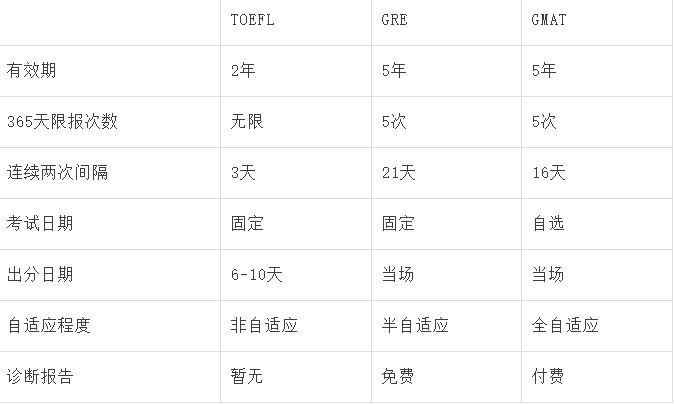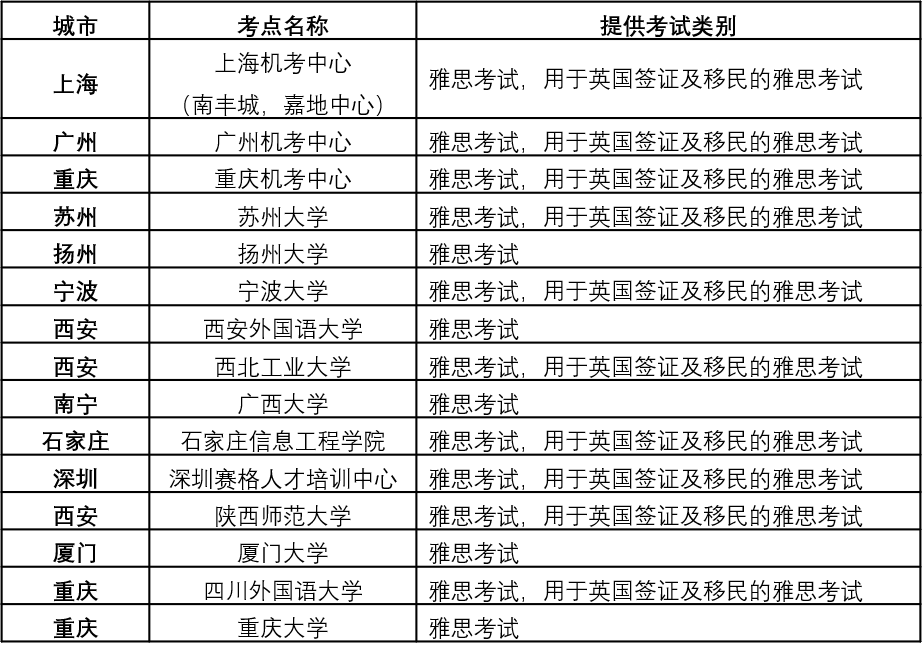托福口语备考中有许多细节值得大家注意,有些细节可能过于繁琐考生很容易疏忽,今天小编给大家带来托福口语备考3要3不要高分口诀介绍,希望能够帮助到大家,下面小编就和大家分享,来欣赏一下吧。
托福口语备考3要3不要高分口诀介绍
托福口语备考三要口诀介绍
口语发音要重视
很多备战托福的同学会觉得口语发音并不需要关注。但事实上,口语最基本的一项评分就是:发音清晰,能让考官听懂学生的答案。ETS的评分官每天都要评判上百份口语答案,所以一个让评分官需要十分费力才能猜测出大概意思的答案,是很不讨喜的。
答题时间要控制
很多学生在口语答题中只关注答题时间,认为把时间凑够了,分数就能上去。其实,为了凑时间重复性复述内容并不能提高分数,相反,把内容清晰地表述出来并做好总结更重要。同时,小编也告诉大家一点,如果你的答案已经做到逻辑清楚,有理有据,即便没有说完所有的点,对于分数的影响并不大。
日常开口要落实
对于口语来说,开口练习十分重要。备考的同学除了上课时间,在平时务必准备一些音频材料(口语task 1,task 2问题,美国新闻素材等),争取做到每天都有开口练习,培养自己说话的能力。对于口语部分,再多的模板、机经,都不如熟练会话的能力更有效。
托福口语备考三不要口诀讲解
不要机械背答案
ETS在判分口语的时候,会让判分员特别注意模板和背诵类型的答案,这些答案是会被压分的。考生们要特别小心。哪怕你已经准备了模板,也要加入适当的停顿,口头语,连词,来丰富自己的答案,让它更“个性化”。
语速不要太夸张
有好多同学为了展示自己的口语水平或者为了答全所有的论点,常常会提高语速。殊不知这么做在口语部分往往得不偿失。英语作为我们的第二语言,熟练程度不高,一旦提高语速,往往会造成发音不清,语法错误或人称误用的情况。所以,小编建议大家:“正常语速,条理清晰”是最佳的答题策略。
答案结构不要乱
托福口语里,一个好的答案肯定是一个结构清晰的答案。鼓励大家:一,多用简单句,少用复杂句。二,开门见山,指出观点或者文中论点,再加上例子或者个人看法,最后再总结。
托福口语考试的评分准则
1. 中心是否切题:
解释:考察考生所表达的口语内容是否完整、准确地回答了题目的要求。考察重点在于考生是否能够准确理解题意和准确迎合题意两个层次。
2. 意思是否明白:
解释:考察考生所表达的口语内容是否能够被明白地理解,还是表面上很流利,而实际上语义含糊、不知所云。
3. 结构是否严密:
解释:考察考生是否有能力将口语用严密的结构和逻辑表达出来,还是缺乏层次,信马由缰。
4. 表达是否连贯:
解释:考察考生口语的语流是否有停顿,这包括思维停顿和表达停顿两方面的原因或表现。但此标准并未对考生的口语表达速度作硬性的要求
5. 发音是否清楚:
解释:考察考生的发音是否能够做到纯正、清晰。起码理解起来并不因为口音的问题存在障碍。
6. 语法是否正确:
解释:考察考生是否能够熟练的使用较复杂的句子结构表达思想,同时尽量避免错误。
7. 词汇是否熟练:
解释:考察考生是否可以掌握足够的英语词汇进行表达,考察重点在熟练度和准确度两个方面。但此标准并未对考生的用词难度作硬性的要求。
怎样做到托福口语考试中的连贯性
1. 运用总分总的结构
Your listeners will understand your talk better if you organize what you say in a logical sequence or linear pattern. This means that you tell the listeners what you are going to talk about and then go through the points you want to make. The most common pattern of organization is outlined below:
Introductory statement
Point 1
Point 2
Point 3
Concluding statement
An example of this pattern is shown below:
Breeding butterflies has many advantages for the collector.
1. way of obtaining specimens
2. spares can be released into the wild
3. helps survival because butterflies have been protected from natural predators
The experience is a learning experience for the collector and a benefit to the species.
2. 运用连接词
Connecting ideas by using transition words and phrases tells your listeners the relationship of one idea to the next. You can signal to your listener that you are going to put events in a sequence, add information, or make a comparison. You can signal that you want to emphasize or clarify a point. Using transition words and phrases helps your listener follow the flow of your ideas. Read the following example without transitional expressions:
In my physics class, we did lots of experiments that helped clarify scientific principles. I understood those principles better by doing those experiments.
These sentences would flow better if the speaker used transitional expressions as in the following example:
In my physics class, we did lots of experiments that helped clarify scientific principles. As a result, I understood those principles better.
3. 解释或定义陌生概念
In order to help your listeners understand, you may need to define a term that you use in your response. Read the following example:
My hobby is telemark skiing.
If the speaker does not define the term and listeners do not know what telemark skiing is, they might not understand the rest of the passage. Sometimes listeners can guess the meaning through the context of the passage, but sometimes they cannot. Here is the definition this speaker gave of telemark skiing:
That means skiing using telemark skis.
Even though the speaker defined telemark skiing, listeners still may not understand what it means because the speaker defined the term with the same word. To effectively define a word, use a three-part definition:
1. State the word or phrase to be defined.
2. Give the category that the word or phrase fits into.
3. Tell how the word is different from other words that fit the same category.
Read this example of an effective definition:
Telemark is a type of alpine skiing in which the boots are connected to the skis only at
the toes, so traditional skiing techniques have to be modified.
4. 正确使用平行结构
Your listener can understand the flow of your ideas better if you use parallel structures when you speak. Read the following incorrect example:
My teacher gave interesting assignments and motivating the students.
The listener may be confused because the speaker has mixed different grammatical structures. Does the speaker mean My teacher gave interesting and motivating assignments to the students'? In this sentence, interesting and motivating are parallel adjectives. Or does the speaker mean My teacher gave interesting assignments and motivated the students? In this sentence, gave and motivated are parallel verbs.
5. 对关键词进行替换或同义转换
When a speaker keeps repeating a word or phrase, listeners can get confused. Read the following example:
My teacher wrote the assignment on the chalkboard. The assignment was on the chalkboard until the teacher erased the assignment after we had all done the assignment.
This speaker's ideas would be clearer if the repeated words were replaced with other expressions or with pronouns. Look at the way this example can be improved:
My teacher wrote the assignment on the chalkboard. She erased the board after we had all completed the task.
The word assignment has been replaced with task; the word teacher with she; and the word chalkboard with board.
6. 时态、人称和数量的统一
Your listener can get confused if you are not consistent. Look at the following example:
My teacher brought five paper bags to school one day. He put us into groups and gave each group a bag. You have to take the objects out of the bags in turn and then a person has to tell a story involving the object from the bag.
The listener may get confused by the change from the past tense to the present tense, and the change from us to you and then to a person. The listener might also be confused by the change from the plural form objects and bags to the singular forms object and bag.
The listener could follow this speaker's ideas better if the speaker were consistent. Look at the way this example can be improved:
One day my teacher put us into five different groups. He gave each group a bag and told us to take turns pulling out an object and telling the other members of the group a story involving that object.
托福口语:家庭类话题素材整编
1.词汇、短语和句型
.家庭成员:great-grandfather, great-grandmother, grandfather, grandmother, father, mother, wife, husband, son, daughter, older brother, older sister, young brother, young sister, grandson, granddaughter, etc.
.家庭类型:a nuclear / small family核心家庭a big / large/extended family大家庭a single-parent family单亲家庭
.亲戚关系:grandaunt姑婆,姨婆;granduncle伯公,叔公,舅公,姑公,姨公; aunt 婶母,伯母,姨母,舅母; uncle 叔父,伯父,姑父,姨父; cousin堂兄弟(姐妹),表兄弟(姐妹); cousin-in-law堂姐(妹)夫,堂嫂,堂弟媳,表姐(妹)夫,表嫂,表弟媳; brother-in-law 姐夫,妹夫; sister-in-law姑,姨,嫂,弟媳; son-in-law女婿; daughter-in-law儿媳; nephew 侄儿,外甥; niece侄女,外甥女; grandnephew甥(外)孙,侄(外)孙; grandniece甥(外)孙女,侄(外)孙女; grandson-in-law孙女婿;granddaughter-in-law孙媳妇;etc.
.常用短语:feed / raise / support a family抚养家庭; found / start a family 建立家庭;family property家产; family financial situation家境; family history家史; family tree家谱;family origin家庭出身; family responsibilities家庭责任; family function 家庭功能; family relationship 家庭关系; family planning 家庭计划; family education 家庭教育; family structure 家庭结构; family ethics 家庭伦理; family consumption 家庭消费; etc.
.常用句型:1. What do you want to say about your family? 2. How many people are there in your family? 3. Do you have any brothers or sisters? 4. Are you the oldest/youngest in your family?5. What do your parents do? 6. I grew up in a very close, loving family.7. I keep in touch with my family regularly. 8. I miss my family very much.
2. 实例:
Narrator:
Now first listen to a conversation about the family and say something about Brian’s family.
Please Listen Carefully.
Lin: Brian, what’s up? You look unhappy.
Brian: Oh, nothing particular, Lin. Just that I miss my family terribly.
Lin: Me too. How many people are there in your family?
Brian: Four. My parents, my elder sister and I.
Lin: What do they do?
托福口语备考3要3不要高分口诀介绍
上一篇:托福综合口语听力部分怎么听
下一篇:返回列表





